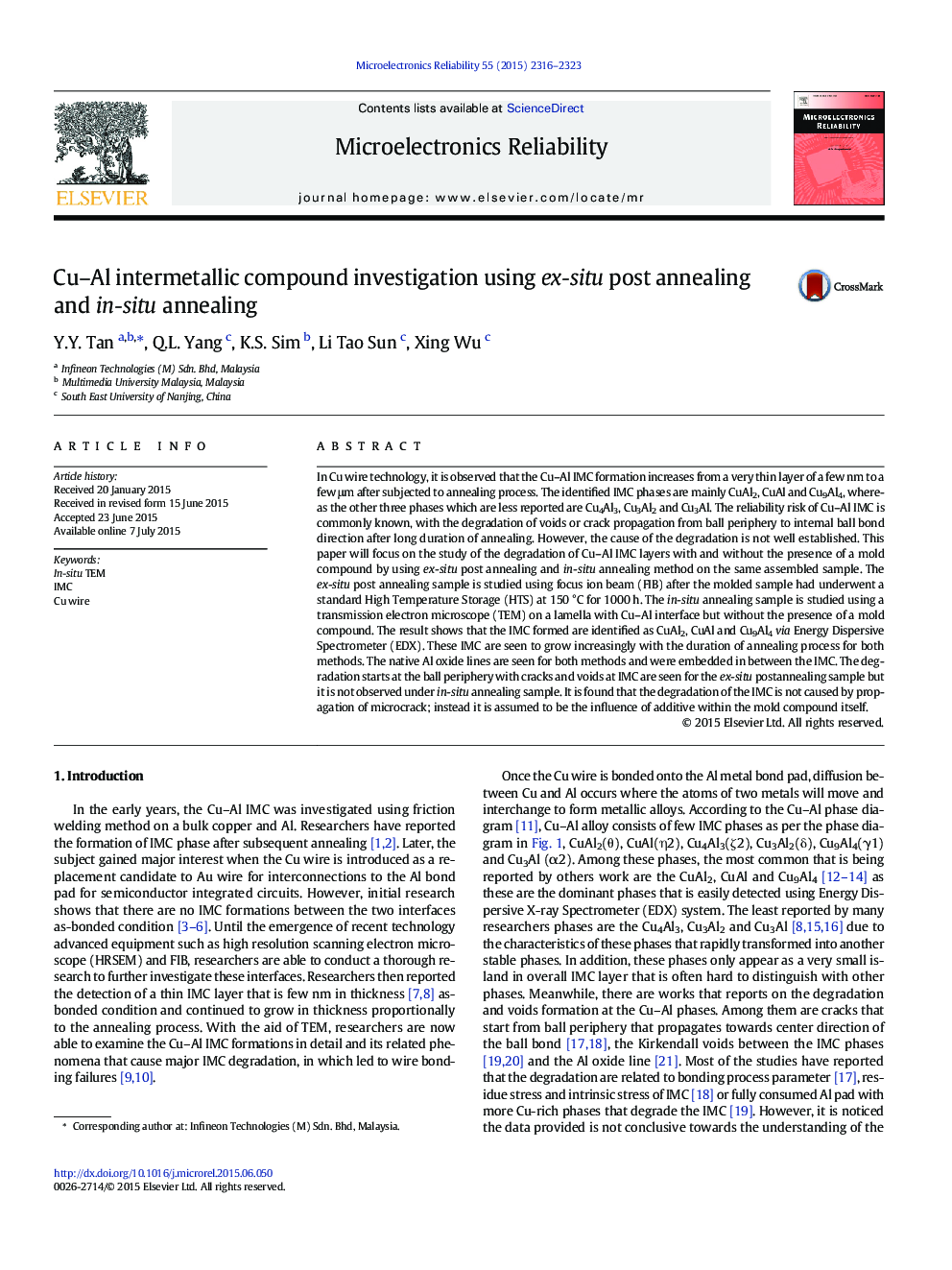| کد مقاله | کد نشریه | سال انتشار | مقاله انگلیسی | نسخه تمام متن |
|---|---|---|---|---|
| 548942 | 872300 | 2015 | 8 صفحه PDF | دانلود رایگان |

• We examine Cu–Al IMC changes using ex-situ annealing and in-situ annealing.
• We first introduce the in-situ annealing in TEM to study Cu–Al IMC.
• Cu–Al IMC phases are identified using both annealing methods.
• In-situ TEM demonstrates Cu–Al has stable IMC growth without degradation crack along the in-situ annealing process.
In Cu wire technology, it is observed that the Cu–Al IMC formation increases from a very thin layer of a few nm to a few μm after subjected to annealing process. The identified IMC phases are mainly CuAl2, CuAl and Cu9Al4, whereas the other three phases which are less reported are Cu4Al3, Cu3Al2 and Cu3Al. The reliability risk of Cu–Al IMC is commonly known, with the degradation of voids or crack propagation from ball periphery to internal ball bond direction after long duration of annealing. However, the cause of the degradation is not well established. This paper will focus on the study of the degradation of Cu–Al IMC layers with and without the presence of a mold compound by using ex-situ post annealing and in-situ annealing method on the same assembled sample. The ex-situ post annealing sample is studied using focus ion beam (FIB) after the molded sample had underwent a standard High Temperature Storage (HTS) at 150 °C for 1000 h. The in-situ annealing sample is studied using a transmission electron microscope (TEM) on a lamella with Cu–Al interface but without the presence of a mold compound. The result shows that the IMC formed are identified as CuAl2, CuAl and Cu9Al4via Energy Dispersive Spectrometer (EDX). These IMC are seen to grow increasingly with the duration of annealing process for both methods. The native Al oxide lines are seen for both methods and were embedded in between the IMC. The degradation starts at the ball periphery with cracks and voids at IMC are seen for the ex-situ postannealing sample but it is not observed under in-situ annealing sample. It is found that the degradation of the IMC is not caused by propagation of microcrack; instead it is assumed to be the influence of additive within the mold compound itself.
Journal: Microelectronics Reliability - Volume 55, Issue 11, November 2015, Pages 2316–2323